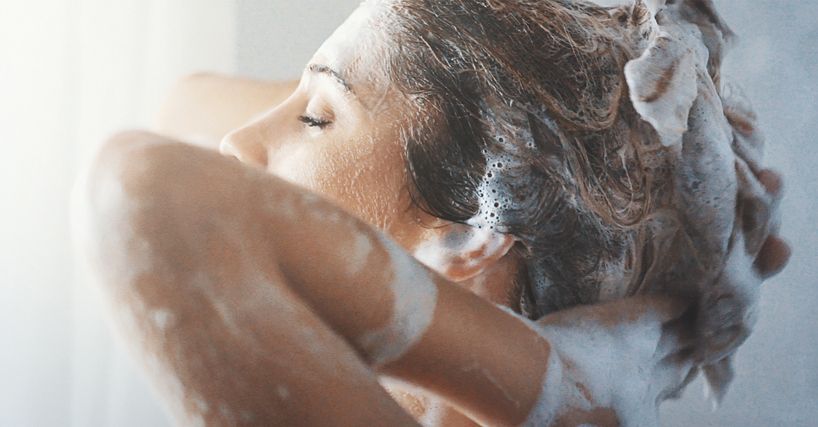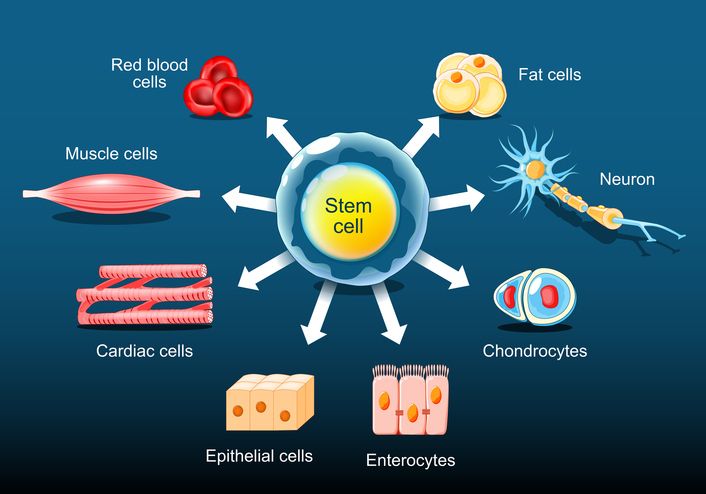Author: Natalie Ng|Updated: 9 June 2025
If you’re trying to manage acne through diet, zinc-rich foods are a smart place to start. Zinc plays a role in skin repair, oil control, and reducing inflammation — all important if you're dealing with acne vulgaris or clogged pores. Oysters are one of the best sources, with grass-fed beef and pumpkin seeds following close behind. You’ll also find zinc in foods like yogurt, cashews, and red kidney beans. These aren’t just rich in zinc, but also offer other nutrients linked to healthy skin, like vitamin E and omega 3 fatty acids. This article will walk through the top zinc rich foods for acne, how they may support your skin, and why they fit well into a balanced diet. Keep reading if you're looking for simple ways to support clearer skin through everyday foods.

Zinc-Rich Foods For Acne 1: Oysters and Shellfish

Importance of oysters and shellfish in an anti acne diet
Oysters are one of the most zinc rich foods for acne. Just six medium oysters provide over 30mg of zinc, which is well above the daily requirement. This makes them especially helpful for those dealing with acne vulgaris, oily skin, or recurring acne flare ups.
Other types of shellfish, like crab and lobster, also support skin health. While they contain less zinc than oysters, they still contribute useful amounts. These foods are rich in nutrients that help:
• reduce inflammation linked to acne lesions
• support collagen production, which may improve acne scars
• maintain skin barrier health through vitamin E and omega 3 fatty acids
Zinc in oysters supports sebum control and acne healing
Zinc plays a significant role in calming inflammation, controlling oil from sebaceous glands, and supporting the healing of clogged pores and damaged hair follicles. These effects may help reduce acne severity, especially if acne is triggered by dietary factors like a high glycemic load diet or refined carbohydrates.
Shellfish can be included once or twice a week as part of a balanced diet. Choose simple cooking methods like steaming or grilling. If raw oysters feel intimidating, start with baked or broiled versions. Always source shellfish from trusted suppliers, and if you're pregnant or managing any health condition, stick to fully cooked options.

Zinc-Rich Foods For Acne 2: Grass-Fed Beef and Red Meat
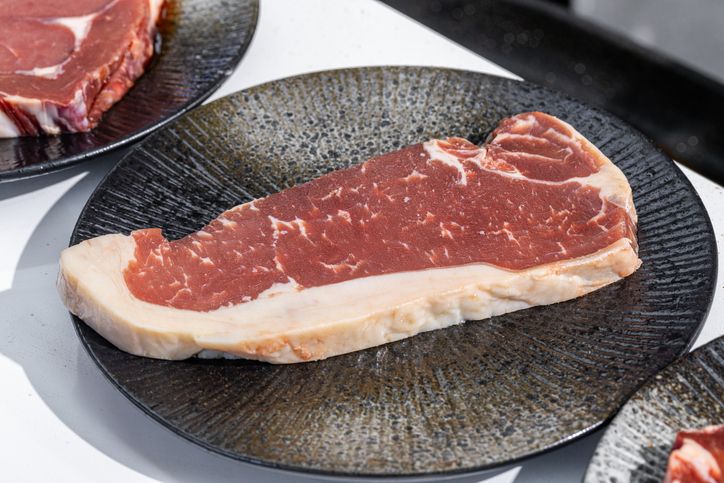
Importance of grass-fed beef for reducing acne severity
For those who don’t eat seafood, grass-fed beef is a reliable source of zinc that supports skin health and may help reduce acne flare ups. A 3.5-ounce serving offers around 4.8mg of zinc — nearly half of the average daily requirement. Grass-fed beef also contains other nutrients like omega 3 fatty acids, which may reduce skin inflammation linked to acne vulgaris.
Different cuts of beef offer slightly different zinc levels, but all contribute to your daily intake. Choosing grass-fed options may also reduce exposure to hormones found in conventional red meat, which can sometimes worsen acne in those sensitive to hormonal fluctuations.
Zinc content in common cuts of grass-fed beef
Including a range of beef cuts in your diet adds variety while keeping your zinc levels steady. Here’s how much zinc you’ll get per serving:
• Ribeye: 4.8 mg (44% daily value)
• Sirloin: 4.2 mg (38%)
• Ground beef: 3.9 mg (35%)
• Flank steak: 3.7 mg (34%)
• Chuck roast: 3.5 mg (32%)
Lean cuts like sirloin and flank steak still offer solid amounts of zinc while keeping saturated fat lower, which can help manage oil production and clogged pores.
How red meat supports skin repair and reduces acne lesions
Zinc plays a key role in skin recovery and may reduce the appearance of acne lesions and acne scars. It also supports immune function, which is closely linked to how the skin reacts to bacteria and inflammation. Including grass-fed beef 2–3 times a week helps maintain zinc levels and supports wound healing, especially when acne is moderate to severe.
Beef can be added to stir-fries, salads, or grilled as a main dish. Rotating different cuts helps balance your intake and gives your meals variety without needing processed ingredients that may worsen acne.
Book Now to Experience
Acne Treatment
1 Minute Self-Registration
Date should not be before minimal date

Zinc-Rich Foods For Acne 3: Pumpkin Seeds and Other Zinc-Rich Seeds
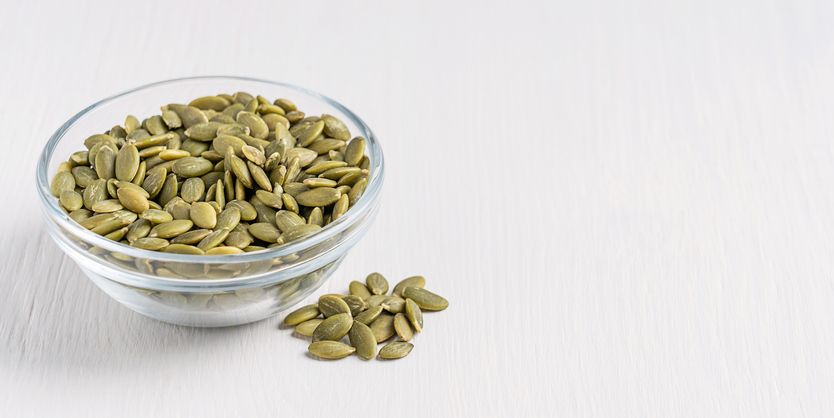
Importance of pumpkin seeds for acne treatment and skin repair
Pumpkin seeds are one of the most concentrated plant-based zinc sources, offering 2.2mg per ounce. They are a convenient, nutrient-dense snack that supports skin health and may help reduce acne severity. Zinc in these seeds plays a role in controlling oil production and supporting the skin’s natural healing process.
If you're aiming for a diet that helps reduce inflammation and improve acne lesions, pumpkin seeds are an easy option to include daily. They also offer antioxidants and healthy fats, which contribute to clearer, healthier skin.
Other zinc-rich seeds that support healthy skin
Besides pumpkin seeds, several other seeds offer smaller amounts of zinc while still supporting an anti acne diet. These include:
• Sunflower seeds: About 1.5mg per ounce
• Sesame seeds: Roughly 1.3mg per ounce
• Chia seeds: Small amounts of zinc with added omega 3 fatty acids
These seeds can be added to meals in many ways:
• Sprinkle them on salads, yogurt, or oatmeal
• Blend into smoothies
• Mix into homemade trail mix with nuts and dried fruit
Combining different seeds also increases your intake of other nutrients like vitamin E, fiber, and plant-based protein — all helpful for skin tone and overall health.
How to improve zinc absorption from seeds
Phytates found in raw seeds can make it harder for your body to absorb zinc. To reduce this effect:
• Soak seeds overnight before eating
• Lightly toast them to break down absorption blockers
• Eat seeds away from calcium-heavy foods, which can compete with zinc for absorption

Zinc-Rich Foods For Acne 4: Greek Yogurt and Dairy Products
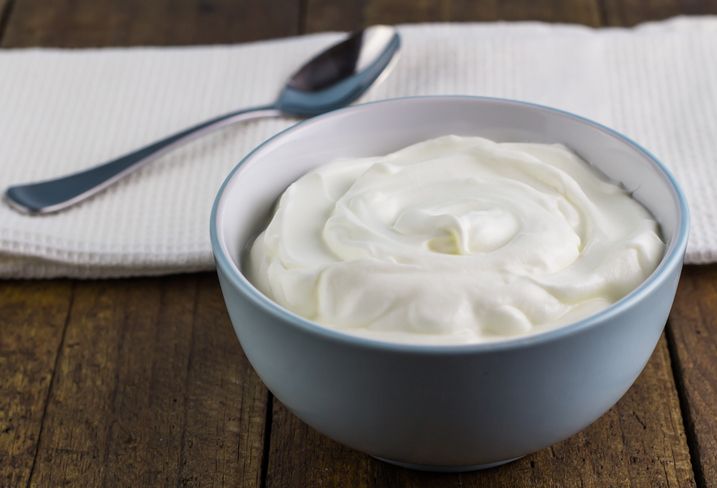
Importance of Greek yogurt for acne and zinc absorption
Greek yogurt contains more zinc than regular yogurt, offering around 1.7mg per 6-ounce serving. While not as concentrated as oysters or beef, it’s still a valuable part of a zinc-rich diet, especially when combined with other foods rich in zinc. The thicker texture of Greek yogurt comes from its straining process, which also concentrates protein and minerals that support skin health.
Zinc helps reduce skin inflammation, supports wound healing, and plays a role in calming acne flare ups. Greek yogurt adds variety to your diet and provides a simple way to maintain regular zinc intake — especially helpful if you're managing oily skin or mild acne.
Zinc content in yogurt and how it compares
Greek yogurt leads among dairy options in zinc concentration. Here’s a general breakdown:
• Greek yogurt: About 1.5–1.7mg per 6–8 oz
• Regular yogurt: Around 1mg per 8 oz
• Other dairy products: Lower amounts of zinc per serving
While dairy can contribute to zinc intake, it's not enough on its own to meet daily needs for acne support. Some research also suggests that skim milk and high ice cream consumption may worsen acne in some people, possibly due to hormonal or insulin responses.
How to get the most skin benefits from yogurt
To support acne treatment through diet, try these tips:
• Eat full-fat Greek yogurt, as it may support better zinc absorption
• Combine with zinc-rich toppings like pumpkin seeds or cashews
• Enjoy yogurt between meals to reduce competition with calcium-heavy foods
• Avoid pairing with refined carbohydrates, which may trigger acne flare ups
Book Now to Experience
Acne Treatment
1 Minute Self-Registration
Date should not be before minimal date

Zinc-Rich Foods For Acne 5: Legumes and Zinc-Packed Beans
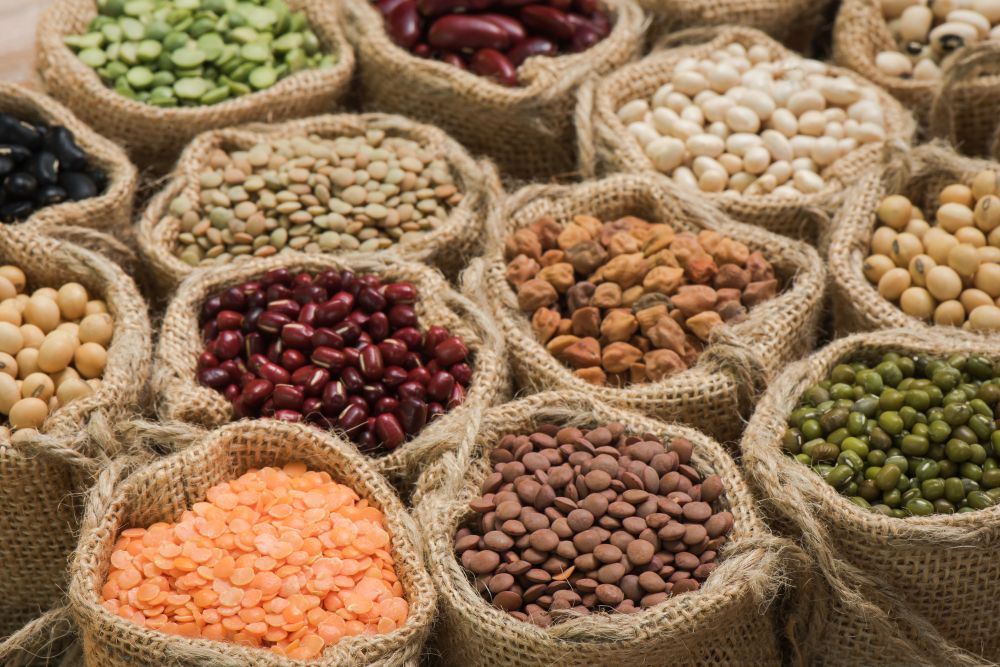
Importance of legumes for acne-prone skin
Legumes are a reliable plant-based source of zinc and offer additional nutrients that help regulate sebum production, reduce inflammation, and support wound healing. They’re a good option for anyone following a balanced diet or looking for non-meat alternatives that still support skin health.
Chickpeas, lentils, and kidney beans stand out for their zinc content and skin-related benefits. These foods may also help manage blood sugar, which can influence acne flare ups and skin tone. Including a mix of legumes in your meals supports long-term improvements in acne severity, especially when combined with other low glycemic index foods.
Zinc content in beans and how to include them
Legumes are rich in zinc and easy to include in a variety of dishes. Here’s what you’ll get per cup (cooked):
• Chickpeas: 2.5mg
• Lentils: 2.2mg
• Black beans: 1.9mg
• Kidney beans: 2.0mg
Try adding legumes to:
• Salads and grain bowls
• Homemade hummus and dips
• Soups, curries, and stews
You can also create mixed bean salads that combine several types in one meal. A serving of two or more bean varieties can boost your zinc intake to over 4mg in one dish.
How legumes support clearer skin and prevent clogged pores
Legumes help regulate oil production from the sebaceous glands and reduce skin inflammation — two key concerns in acne vulgaris. Their high fiber content helps stabilize blood sugar levels, which can reduce the risk of acne flare ups triggered by high glycemic load diets.
Other nutrients in legumes support:
• Collagen production, which can improve acne scars
• Antioxidant activity, reducing redness and skin irritation
• Repair of damaged skin cells from acne lesions
To help your body absorb zinc more efficiently, soak legumes overnight before cooking. This reduces phytates that may interfere with mineral absorption and also improves digestion.

Zinc-Rich Foods For Acne 6: Dark Chocolate and Cacao

Importance of dark chocolate for skin health and acne support
Dark chocolate and raw cacao powder may not seem like typical acne-fighting foods, but they offer small amounts of zinc along with antioxidants that help reduce skin inflammation. A square of dark chocolate with at least 70% cacao contains about 0.75mg of zinc per ounce, while a tablespoon of raw cacao powder provides around 0.5mg.
Although the zinc content is lower compared to other foods, dark chocolate can still support a varied anti acne diet when enjoyed in moderation. Its antioxidant properties may help calm inflamed skin and reduce damage from free radicals, especially in cases of mild to moderate acne.
How to include dark chocolate and cacao without worsening acne
Because excess sugar may worsen acne, it's important to choose dark chocolate carefully and avoid sweetened or processed types. Stick to simple additions that let you enjoy the benefits without triggering acne flare ups.
• Choose chocolate with at least 70% cacao or higher
• Use unsweetened raw cacao powder in smoothies or oatmeal
• Limit portions to about 1 ounce of chocolate or 1 tablespoon of cacao powder per day
• Avoid pairing with sugary or high glycemic load foods
Cacao contains natural compounds that support circulation and may promote clearer skin over time. When included as part of a diet focused on low glycemic foods and zinc-rich ingredients, it adds a small but helpful boost.
Book Now to Experience
Acne Treatment
1 Minute Self-Registration
Date should not be before minimal date

Zinc-Rich Foods For Acne 7: Nuts
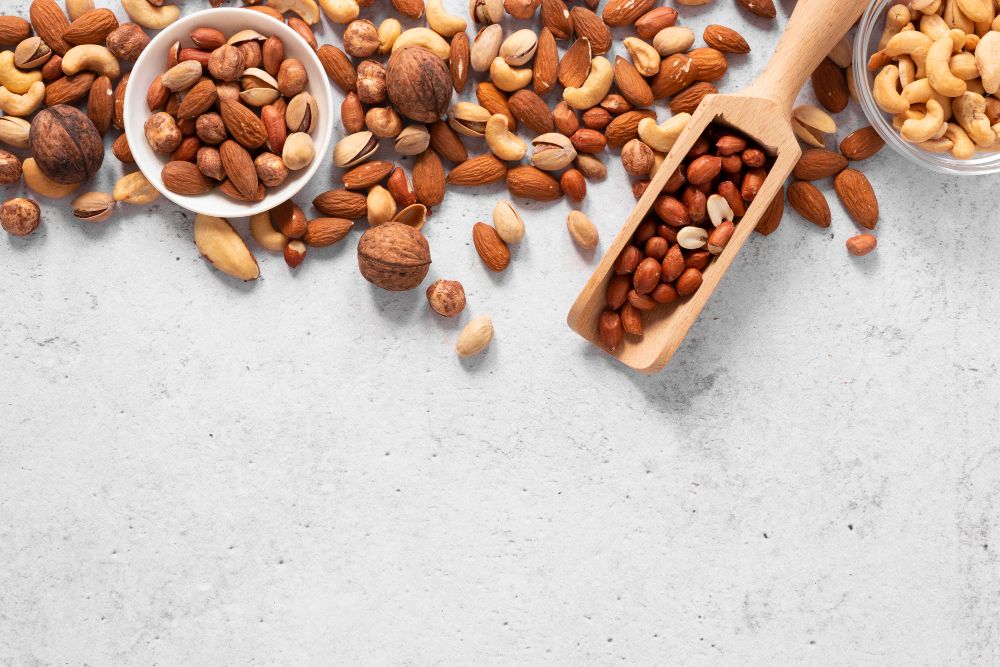
Importance of nuts for reducing acne flare ups
Nuts are an easy and portable source of zinc that fit well into a diet focused on acne treatment and skin repair. Cashews, in particular, offer a high amount of zinc — about 5.6mg per 100g — and help support healthy skin through their anti inflammatory properties and essential fats.
Nuts may also help regulate sebum production and promote collagen production, both of which contribute to a smoother skin tone and fewer acne lesions. Because they’re rich in nutrients like vitamin E and omega 3 fatty acids, they support the skin's barrier function and reduce the risk of clogged pores.
Zinc-rich nuts that support acne-prone skin
Different nuts offer different levels of zinc and skin-supportive nutrients. Here’s a breakdown of a few worth including:
• Cashews: 5.6mg zinc per 100g
• Pine nuts: 6.5mg per 100g
• Pumpkin seeds (often grouped with nuts): 7.8mg per 100g
• Almonds and walnuts: Lower in zinc, but rich in anti inflammatory fats
Including a handful (about 1 ounce) of mixed raw or dry-roasted nuts each day can support regular zinc intake and help reduce inflammation linked to acne vulgaris.
How to add nuts to your anti acne diet
Nuts can be added to meals or eaten as snacks to make your diet more zinc-rich without much effort:
• Sprinkle on top of Greek yogurt or oatmeal
• Combine with dark chocolate in a homemade trail mix
• Add to smoothies or chopped over salads for extra crunch
Choose raw or dry-roasted varieties with no added salt or oil to keep your intake clean. Avoid pairing nuts with sugary or processed foods, which can raise blood sugar and worsen acne symptoms.

Zinc-Rich Foods For Acne 8: Whole Grains for Steady Zinc Intake
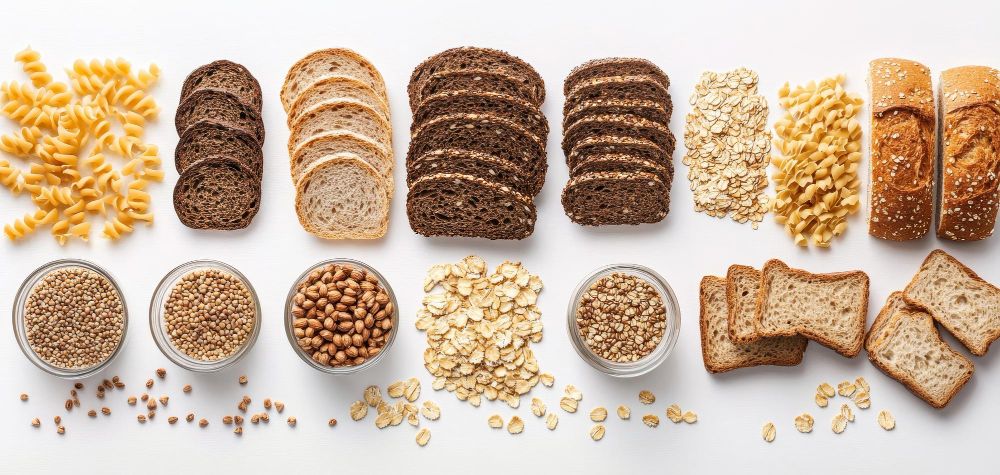
Importance of whole grains for long-term skin support
Whole grains may not offer the highest zinc content per serving, but they contribute to a stable, long-term intake — especially when included in regular meals. They also help balance blood sugar levels, which can play a role in acne flare ups, particularly in people following high glycemic load diets.
Zinc from whole grains supports skin repair and may reduce the impact of underlying imbalances that lead to acne vulgaris, clogged pores, or excessive oil production. Choosing unrefined grains helps preserve their zinc content and other nutrients essential for healthy skin.
Zinc content in common whole grains
Here are a few zinc-rich whole grains that support clear skin and fit into an anti acne diet:
• Quinoa: Around 2mg of zinc per cooked cup
• Wild rice: About 1.5mg per serving
• Steel-cut oats: Roughly 1mg per half cup cooked
• Whole wheat bread: About 1mg per slice (varies by brand)
• Brown rice: Lower zinc content, but still contributes when eaten regularly
Whole grains also provide fiber, which supports gut health and helps manage blood sugar spikes — a factor that may influence acne severity.
How to include whole grains in your daily meals
Whole grains are easy to work into breakfast, lunch, or dinner. To make the most of their zinc and other skin-supporting nutrients:
• Replace white rice with quinoa or wild rice
• Use steel-cut oats instead of instant varieties
• Choose whole grain bread or pasta over refined versions
• Mix grains with legumes or seeds for added zinc and texture
Focusing on low glycemic index grains helps reduce oil production, support collagen development, and promote an even skin tone. For better absorption, soak grains like oats or quinoa before cooking, which helps reduce compounds that can interfere with zinc uptake.
Book Now to Experience
Acne Treatment
1 Minute Self-Registration
Date should not be before minimal date

Impact of Diet on Acne Severity and Skin Health
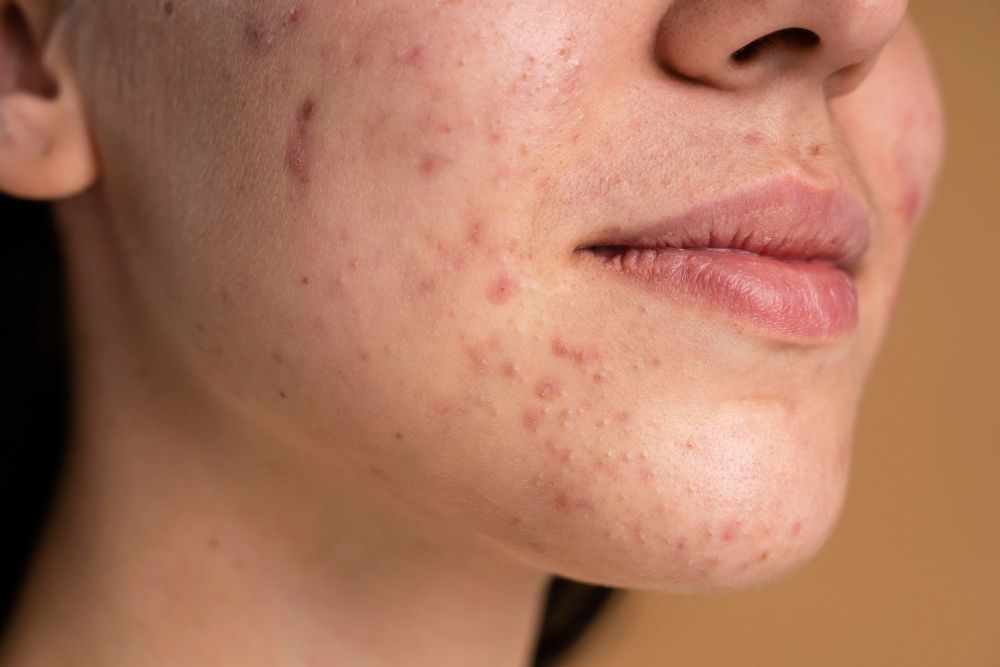
Importance of dietary factors in acne vulgaris
While genetics and hormonal fluctuations contribute to acne vulgaris, what you eat has a clear effect on acne severity. Diets high in refined carbohydrates or those with a high glycemic load increase blood sugar levels, which can lead to higher insulin activity. This process encourages sebum production, clogs pores, and increases the likelihood of acne flare ups.
A shift toward a balanced diet with low glycemic foods, fruits and vegetables, and zinc rich foods for acne can help reduce oil buildup and skin inflammation. These dietary changes support clearer skin by improving how the body manages oil and responds to internal triggers.
Specific foods that can worsen acne symptoms
Certain foods may aggravate acne-prone skin by disrupting internal balance and contributing to clogged hair follicles and oily skin. These include:
• Refined carbohydrates such as white bread, pastries, and sugar-heavy snacks
• Dairy products like skim milk and ice cream, which may influence hormone levels
• High glycemic load foods, which cause rapid spikes in blood sugar
Limiting these foods may reduce the frequency of acne breakouts and improve overall skin tone. Replacing them with foods rich in zinc, fiber, and anti inflammatory nutrients supports both short-term relief and long-term skin improvement.
Nutrients that support clearer skin from within
Including more zinc rich foods, alongside nutrients like vitamin C, vitamin E, and omega 3 fatty acids, helps the skin heal and repair. These nutrients play a role in:
• Calming skin inflammation
• Stimulating collagen production
• Supporting natural recovery from acne scars
• Improving hydration in skin prone to acne lesions
Zinc also helps regulate oil production, keeping the sebaceous glands balanced and less reactive to diet-triggered changes. Choosing low glycemic meals and zinc-packed ingredients creates a steady foundation for healthy skin and reduces the chances of developing acne linked to dietary factors.

Acne Treatment That Supports Zinc-Rich Diets for Clearer Skin
Eating zinc rich foods for acne — like oysters, pumpkin seeds, and legumes helps regulate oil production, reduce inflammation, and support skin healing. While some people turn to zinc supplements for acne due to their potential anti-inflammatory benefits, dietary sources are generally preferred for their additional nutrients and lower risk of side effects. But even with a balanced diet, stubborn acne lesions, clogged pores, and acne scars can still take time to improve. That’s where professional acne treatments can make a difference and support your skin from the outside in.
New Beauty’s Acne Treatment is designed to work alongside your anti acne diet. While zinc from foods plays a role internally, this treatment helps clear the surface — removing dead skin cells, calming inflamed areas, and keeping pores clean so your skincare and nutrients work better.
How the Acne Treatment works
This treatment combines deep pore cleansing with hydration using a three-step system:
• Step 1: A consultation and patch test are done to ensure your skin responds well.
• Step 2: A vacuum-like spiral suction gently exfoliates the skin and drains impurities like excess sebum, dead skin cells, and dirt. This helps calm active breakouts and clear clogged pores.
• Step 3: A medical-grade hydrating serum is infused into the skin to balance oil and moisture levels. This helps reduce oil production and supports collagen production to improve acne scars and skin tone.
Advantages of combining treatment with a zinc-rich diet
• Removes buildup that may block the benefits of zinc
• Supports skin barrier recovery while reducing oily skin
• Helps manage acne vulgaris, blackheads, and whiteheads with a non-invasive method
• Promotes clearer, more even skin without downtime or harsh procedures
This non-invasive treatment can be a helpful addition to your acne treatment plan — especially if you're already improving your diet with foods rich in zinc and low glycemic index meals. Regular sessions help maintain progress and give you visible improvements over time.
Book a consultation now to see how the Acne Treatment can complement your skincare and dietary routine.
New Beauty's Acne TreatmentBook Now to Experience
Acne Treatment
1 Minute Self-Registration
Date should not be before minimal date
FAQ
Can zinc rich foods help with hormonal acne?
Yes, zinc rich foods may support hormonal balance by regulating oil production from sebaceous glands and reducing inflammation. While they don’t directly alter hormone levels, zinc plays a role in moderating the skin’s response to hormonal fluctuations, which can help manage acne vulgaris triggered by hormone changes, especially around the jawline and chin area.
What are some vegetarian sources of zinc for acne-prone skin?
Vegetarian-friendly foods rich in zinc include pumpkin seeds, lentils, chickpeas, quinoa, Greek yogurt, and cashews. These plant-based options also offer fiber and antioxidants that support healthy skin and help regulate blood sugar levels, both of which can reduce acne flare ups and clogged pores.
Does cooking affect zinc content in foods?
Cooking can slightly reduce the zinc content in some foods, especially plant-based ones. However, cooking methods like steaming or lightly roasting usually retain most of the zinc. Soaking and cooking legumes or grains also help improve zinc absorption by reducing compounds that interfere with mineral uptake, such as phytates.
How long does it take to see results from eating zinc rich foods for acne?
Visible changes in skin health may take 4 to 6 weeks after adding zinc rich foods to your diet, depending on acne severity and overall dietary habits. Consistency and pairing zinc with other nutrients like vitamin C, omega 3 fatty acids, and low glycemic foods can support better results over time.
Can zinc rich foods help with other skin conditions besides acne?
Yes, zinc supports general skin health by promoting wound healing, reducing inflammation, and helping with collagen production. It may also benefit other skin conditions such as rosacea, eczema, and dull skin tone, especially when paired with a balanced diet and proper skincare.
Recommended Articles
COPYRIGHT© NEW BEAUTY MANAGEMENT LIMITED 2025. ALL RIGHT RESERVED.

